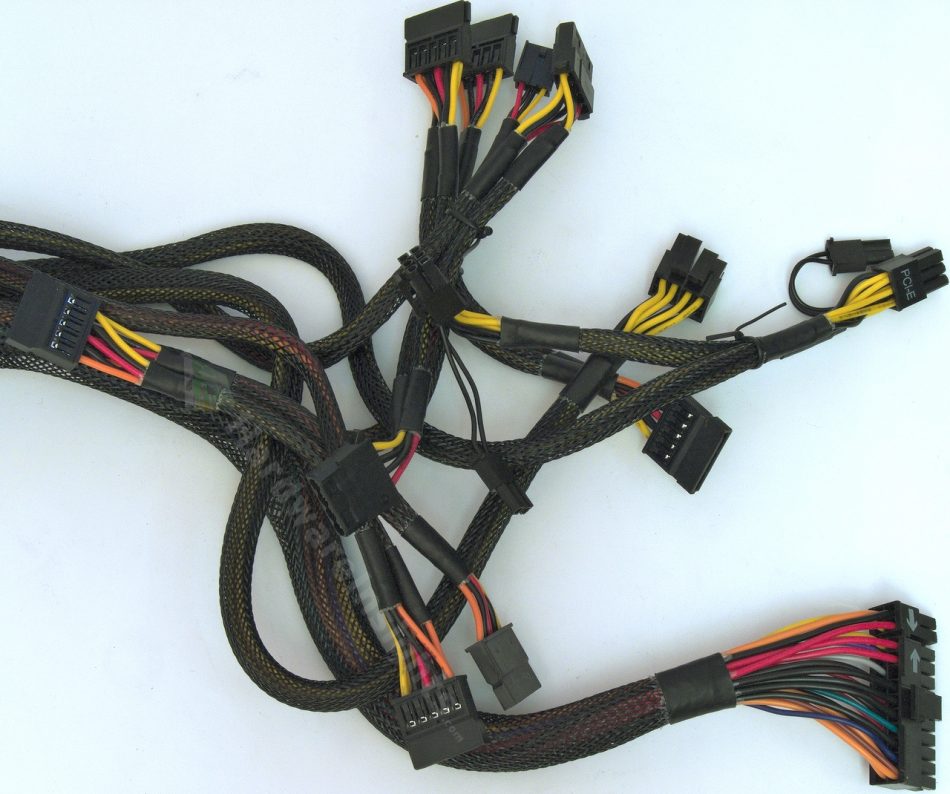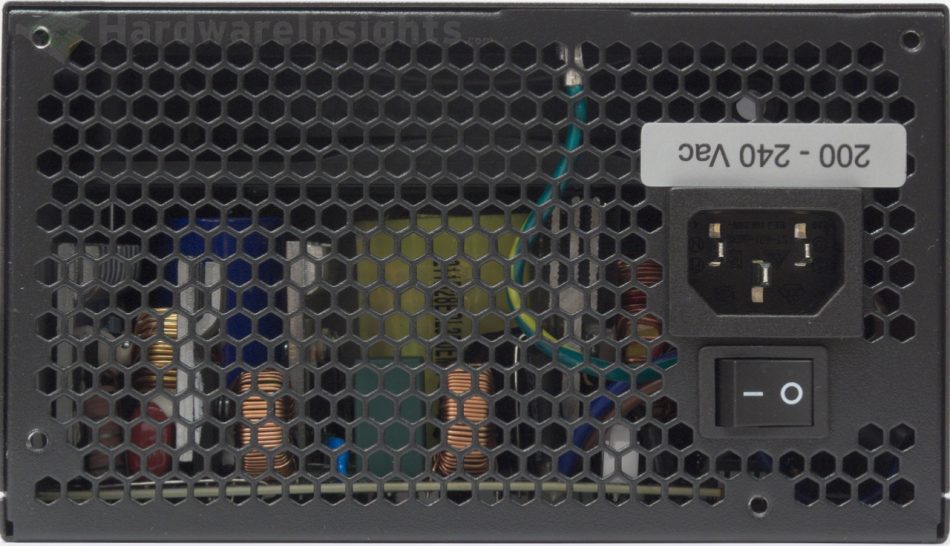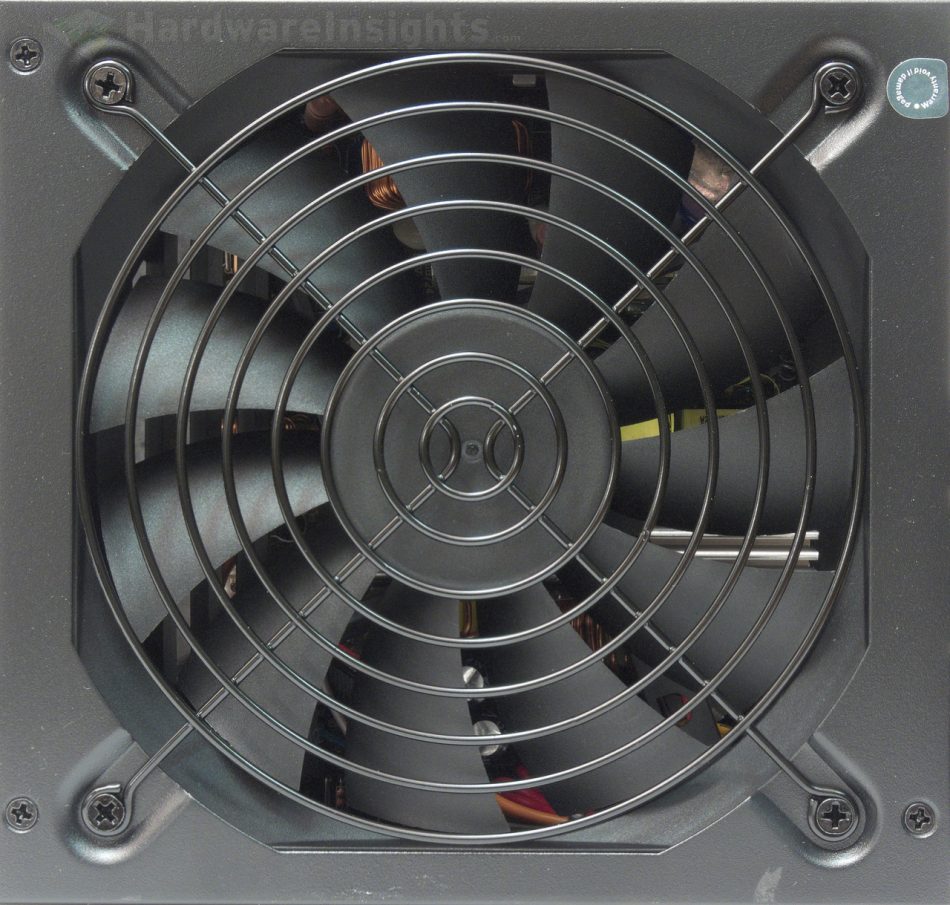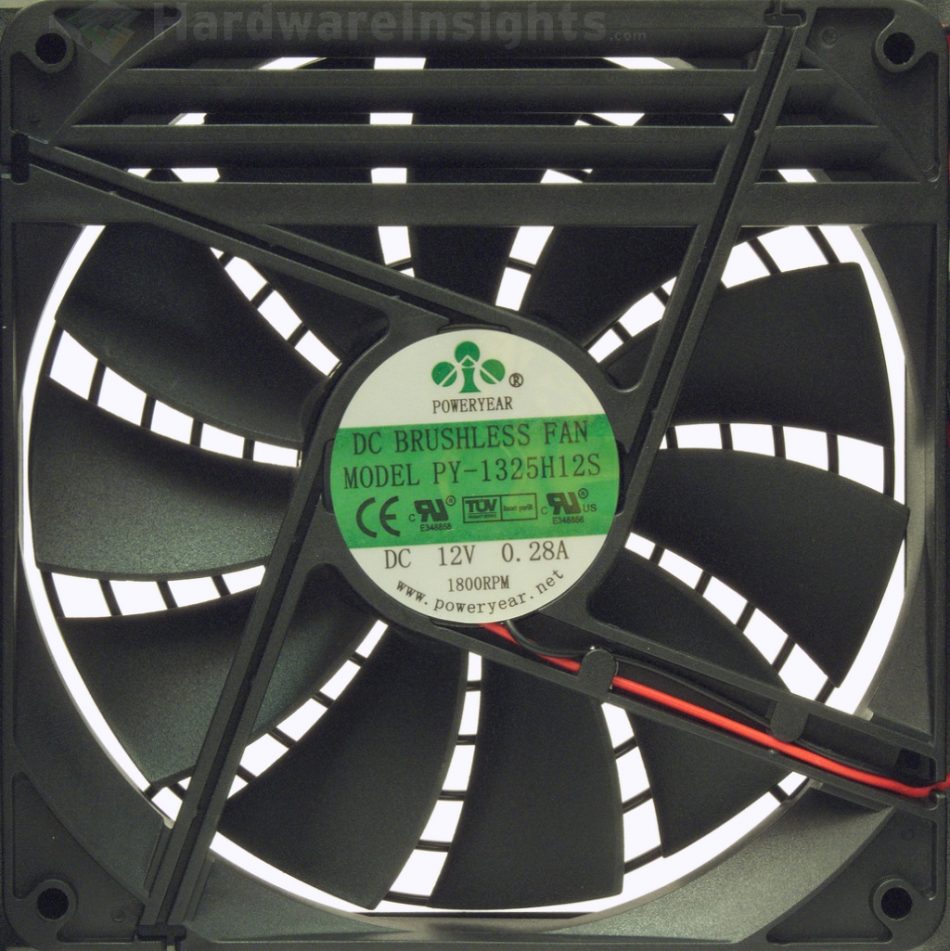Contents
- 1Introducing the Linkworld LPW1685-70
- 1.1Packaging and accessories
- 2Connectors & cabling
- 2.1Casing & cooling
- 3Input filtering
- 4Primary side
- 4.1+5 V stand-by rail
- 5Secondary side
- 5.1Build quality
- 6Load testing
- 6.1Loading +5 V SB
- 6.2Hold-up time
- 6.3Combined loading
- 6.4Combined loading ripple
- 6.5Crossloading, overloading
- 6.6Crossloading, overloading ripple
- 6.7Fan speed, temperatures and noise
- 7Conclusion and evaluation
- 7.1Thanks
- 7.2Discussion
Connectors & cabling
Basically the whole cabling uses 18AWG wiring. The only exception is a few wires which conduct small currents (feedback, PWR Good, PWR On, Berg etc.) and also the two extra ground wires for 6+2pin PCIe connectors. These are all 20AWG. So both the 6+2pin PCIe connectors share three common +12V conductors and three common return conductors. I know we are in low-end, but I would still very much prefer at least having five return conductors, even though common for both connectors. Having 300 W on this cabling means really pushing it and some return currents through the VGA and motherboard. All the cables are sleeved which is nice and the cables are also somewhat tied together to hold some reasonable shape for transportation. But maybe Linkworld should have had provided more wires for the PCIe cables rather than sleeving everything.
In total, we have:
- 1× Main ATX (20+4pin): 50 cm
- 1× ATX 12 V (4+4pin): 56 cm
- 2× PCIe (6+2pin): 50, 65 cm
- 6× SATA: 2× 41 cm, 2× 56 cm, 2× 72 cm
- 2× peripheral molex: 41 cm, 56 cm
- 1× Berg for FDD: 71 cm
Casing & cooling
The metal chassis of the LPW1685-70 consists of 0.9mm SECC steel which has a black (most likely powdered) finish. The backside has hexagonal openings for the exhaust air. These are also present underneath the input receptacle and single-pole AC switch which is nice. A plastic grommet protects the cables coming out of the unit on its back side.
Linkworld opted for a wired fan grille which is nice as it produces less turbulence and noise. There’s a warranty sticker over one of the case screws.
As we can see there are some blinds over the fan. I have no idea what are they for. One would think they are to direct the air which would normally escape the chassis immediately to flow towards the centre of the unit and help cooling something. But their position suggests they rather help the air escaping even sooner. The fan itself is the Poweryear PY-1325H12S. Besides the fact it is 135mm sleeve-bearing fan and the maximum speed is rated at 1800 RPM I know nothing else.





